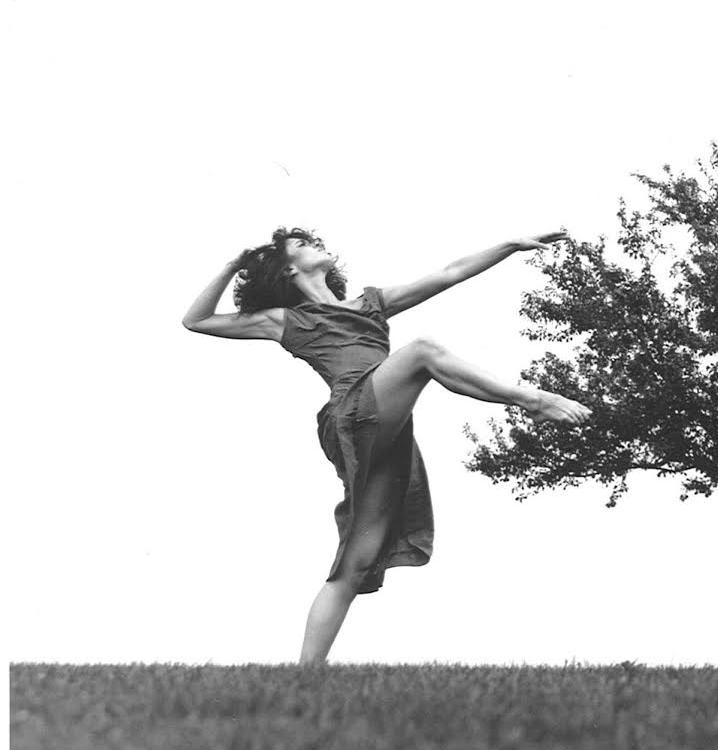
5 minute read
NANCY ALLISON: MOVEMENT AND THE MOVING IMAGE
NANCY ALLISON: MOVEMENT AND THE MOVING IMAGE
A lifelong career in modern dance
Story by Daniel J King
Originally published by the College of Fine Arts at Ohio University, 2017
Following her undergraduate studies in dance at Ohio University, choreographer Nancy Allison joined the Theater of the Open Eye in 1976, founded that same year by the legendary Jean Erdman and her husband Joseph Campbell.
Nancy Allison’s recent short film project “Hamadryad” (2015), created with co-director Paul Allman, premiered at the 2015 Film Society of Lincoln Center’s Dance on Camera Festival in New York City and has been screened in nearly a dozen festivals around the world since.
The film is a re-staging of the renowned solo choreographic work “Hamadryad” originally created by Jean Erdman in the 70s—newly performed by dancer Miki Orihara, who is best known for her work as a principal dancer in the Martha Graham Dance Company.
“Erdman choreographed her work in a studio setting, but she was often directly and indirectly inspired by the surrounding green landscapes of Woodstock, New York. I thought for this film I’d like to take her choreography back into the environment that in-
“Erdman choreographed her work in a studio setting, but she was often directly and indirectly inspired by the surrounding green landscapes of Woodstock, New York. I thought for this film I’d like to take her choreography back into the environment that in-
spired her,” described Allison.
“Dance and film have a long history together. Maya Deren (seminal American experimental filmmaker) and Jean Erdman were friends!” said Allison.
“Gladys Bailin, my teacher and then head of the dance program at Ohio University, recommended I get involved with the Theater of the Open Eye, my junior year in Athens. After graduation, I was invited to join the company,” said Allison.
In the late 70s, Erdman was creating large scale performances, known as “total theater works,” combining dancers, actors and musicians. Allison danced in two revivals of the signature work of the company, “Moon Mysteries: Three Plays for Dancers by William Butler Yeats,” as well as in the three-person multi-media work, “Op Odyssey.” This work featured kinetic sculptures and computer synthesized films by visual artist, Doris Chase. This was Allison’s first experience combining dance and film. “Op Odyssey” won the prize for Best Company Performance at the 15th In-
ternational Festival de la Danse in Paris and toured in the U.S and Europe from 1977-1979.
From 1987-1993 Allison was the executive director, assistant choreographer and featured dancer for the Jean Erdman Video Project which produced the three volume video archive “Dance & Myth: The World of Jean Erdman.”
“The archive captured eleven dances from Erdman’s historic repertory combined with footage of Erdman and her dancers in rehearsal, archival footage and her own voice-over narration describing her aesthetic concerns and artistic process while creating each piece,” said Allison.
One of the pieces Allison danced for this film series was “Hamadry-
ad” (1948), the same choreography she most recently focused on in her own film project.
“I’ve created choreography for other projects on-site, which made it a bit easier. There are many phrases that require dancers to do turns, turning on the balls of their feet outdoors, in the grass— they’re literally digging a hole for themselves.”

Working on non-traditional stages, outdoors and impromptu spaces, according to Allison, is happening in dance more and more—modern dance has a long history of finding influence in the natural world.
Allison quotes Joseph Campbell, “the human anatomy, from which all human needs can be traced, has remained pretty much unchanged since 40,000 BC,” when she counters that “dance—like any art form—is forever changing.”
“In some ways there are more opportunities, more dance education in public schools than ever before. There are many other
opportunities now to make a living doing something related to the body. The traditional roles as “company dancer,” may be more difficult, but there are so many other ways that dancers can function as teachers and guides. I’m thinking about body disciplines, movement for healing illness, movement for thinking, for physical fitness, all of which connects to the work of a dancer,” said Allison.

“’Once a dancer, always a dancer,’ I like to say, and there’s no escaping the body,” said Allison, “I still begin everyday with about an hour or two of physical practice. Nowadays, that might be yoga and meditation, contact improvisation or time alone preparing for a creative project.”
The varied career paths of today’s university educated modern dancers cross disciplines like anthropology, management consulting, public speaking, conflict resolution, senior care, cancer survivor programs, substance abuse counseling, rape and human traffick-
ing survivor’s programs, as well as general and special education at all levels.
Last summer, Allison began “The Marble Project,” a cinematic collaboration with Italian choreographer, Laura Boato. Another dance film project, this one focused on site-specific dances performed in the ancient marble quarries favored by Michelangelo in Versilia, Tuscany. A co-production of Fondazione Arkad, INDACO and Nancy Allison/NYC, the films are now in post-production.

Nancy Allison teaches workshops and choreographs as a guest artist at universities and studios in the US, Canada and Europe. Additionally, she is editing “Joseph Campbell’s Collected Writing on Dance” for the Joseph Campbell Foundation, scheduled for publication by New World Library in 2017.

